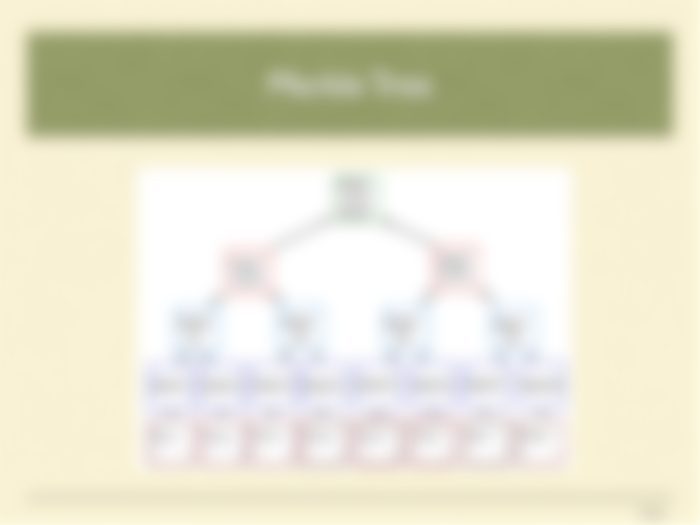Hello readers!
The following is a reading through the bitcoin whitepaper, and an attempt to summarize it by a non-technical person. I have been interested in Bitcoin since 2015. Bitcoin and the principles it stands for (decentralized sound money that is free from inflation and censorship; in a voluntarist world with free markets) have become a way of life for me since then.
I kept reading up and learning about Bitcoin and its technology. I also followed the discussions on reddit and other platforms. However, I found that most of these discussions are among the developers and the technology experts. I thought there has to be a lot of people like myself.
In this article, I try to read through the whitepaper as a person with a limited (but not zero!) technical background. It is a difficult task summarizing a 9 pages long technical paper in a few paragraphs, but I will do my best. You will find a few slides for illustration of some of the basic concepts, and a commentary at the end.
OK, thank you Omar, but what is the whitepaper anyway?

The Bitcoin whitepaper by Satoshi Nakamoto was the first document to outline the principles of a cryptographically secured, trustless, peer-to-peer electronic payment system that was designed to be transparent and censorship-resistant, as well as put financial control back in the hands of the individual.
So who is Satoshi Nakamoto?
In short, nobody really knows. Satoshi has chosen to keep his/her identity a secret. It has been the subject of much speculation. While Satoshi's identity may be interesting, it is the ideas that are truly revolutionary. Satoshi announced the invention of Bitcoin in a forum post here on February 11, 2009.
OK, back to the whitepaper, let's dive right in.
Bitcoin: A Peer-to-Peer Electronic Cash System
The Bitcoin whitepaper is 9 pages long and consists of an abstract and 12 sections.
Bitcoin Whitepaper: ABSTRACT
Satoshi Nakamoto outlines:
The Problem:
There is no way of making peer-to-peer payments online that bypass financial institutions. Some solutions exist that utilize digital signatures, but these require a trusted third party to ensure that the digital value is not spent more than once.
The Solution:
A pure peer-to-peer network that "hashes" transactions, using cryptography, into a chain of hash-based proof-of-work records.
The chain provides proof of the chronological sequence of transactions and the verification from “honest” nodes that collectively control the largest pool of CPU power.
1. INTRODUCTION
Satoshi discusses the inefficiencies of online commerce: reliance on financial institutions and the need for trusted parties to process payments. There is a need for an electronic payment system that: 1) uses cryptographic proof rather than trust, 2) enables parties to transaction directly with one another bypassing any central or trusted third party, and 3) protects sellers from fraud.
2. TRANSACTIONS
Satoshi explains that Bitcoin is a chain of digital signatures.

Every owner of an electronic coin passes it to the next owner by digitally signing: A hash of the previous transaction and the public key of the new owner, and adding the above 2 components to the end of the coin.

The new owner is in turn able to verify the signatures which in turn allows him/her to verify the ownership of the electronic coin.
In order to achieve the above without a trusted third party requires that the transactions are declared publicly, and confirmed through a system whereby all participants (nodes) agree the history and order in which the transaction was received.
3. TIMESTAMP SERVER:
The timestamp server is software that takes the hash of a block of transactions, timestamps them and publicly broadcasts the hash.
This hash serves as proof that a block of transactions existed at a given time, which allows network participants to verify the order in which blocks of transactions were broadcasted.
Each block's timestamp includes the previous block's timestamp, creating a chain, and as new timestamp hashes are added, the chronological order and links are strengthened.
4. PROOF OF WORK:
Satoshi explains that implementing a distributed timestamp server requires a proof of work system. Proof of work requires scanning for a value using an algorithm, which when hashed the hash value starts with a number of zero-bits.
POW is a verification process which requires significant CPU effort, and ensures that a verified block cannot be changed because all later blocks that are chained to it will also need to be changed (each subsequent block would need to be verified, requiring increasing CPU). It provides one vote per CPU, not by IP address; otherwise an attacker may allocate several IPs in an attempt to hack the network.
5. NETWORK:

This section outlines the process required to run the network. New transactions must be transmitted to all nodes.
Each node gathers each transaction into a block, nodes accept the block if all the transactions within it are valid and not already spent.
Nodes continue to work on the longest chain, which is always the correct one.
6. INCENTIVE:
The goal in the peer to peer electronic cash system is to encourage nodes to connect to the network and validate transactions.
In order to generate new blocks and therefore coins (value), CPU and electricity are needed.
7. RECLAIMING DISK SPACE:

Any old transactions can be removed to save disk space, transactions are hashed in a "Merkle Tree".
This allows for old blocks to be consolidated by essentially removing the tree branches, but keeping the root.
8. SIMPLIFIED PAYMENT VERIFICATION:
Payment verification is possible without running a full network node by: getting a copy of the block headers of the longest proof-of-work chain, verifying that you have the longest chain, and linking the transaction to the chain.
9. COMBINING AND SPLITTING VALUE:
To allow value to be divided and merged, transactions contain various inputs and outputs. e.g., a single input from a large transaction, or many smaller inputs.
10. PRIVACY:
Limiting access to information is not workable in a model where the transactions are broadcast publicly, but the need for privacy is still important. Privacy is maintained by keeping public keys anonymous. While everyone may be able to see transactions, no identifiable information is distributed.
11. CALCULATIONS:
This is the longest section in the whitepaper, and the calculations require a somewhat advanced understanding of mathematics.
Here, the paper considers a scenario where bad actors in the system try to generate an alternative chain faster than the honest chain. In this scenario there is a race between the honest chain and an attacker chain. This section proves that the odds are against the attacker chain.
12. CONCLUSION:
The whitepaper concludes:
Where honest nodes control the majority of CPU power, a peer-to-peer network that uses proof-of-work to record public transactions makes it computationally impractical for attackers to tamper with.
The network strength lies in its unstructured simplicity.
Nodes working independently with little coordination, they can leave and rejoin the network as they wish, relying on the proof-of-work chain as proof of what happened while they were gone.
Nodes vote with their CPU power.
Rules and incentives are enforced through the consensus mechanism.
Congratulations!
We have finished reading through the whitepaper. I hope that this summary gave you an idea of what the whitepaper describes and its main concepts.
Thoughts and comments:
The Bitcoin whitepaper is an interesting read, even for the non-technically inclined like myself.
As much as the technical descriptions in the whitepaper are intriguing, the non-technical messages are straightforward, clear, and very important for anyone interested in Bitcoin, since they convey the true vision of the designer of this great invention.
A brief history: As Bitcoin became more widely used, a debate on how best to increase its capacity started among developers "scaling debate". The "big blockers" wanted to increase the maximum block size to allow Bitcoin to scale on-chain. The other side was pushing for keeping a limit on the block size.
While both sides had valid technical arguments, it became clear that the small block group was intentionally aiming to limit the network capacity to push for their "Layer 2" solutions: making money by offering commercial solutions to the network congestion problems by handling transactions off-chain.
The scaling debate ended with the activation of "SegWit2x" hard fork of Bitcoin, and Bitcoin split in August 2017. Bitcoin Cash was born, allowing larger blocks. The new SegWit2x coin managed to keep the Bitcoin name; even though technically, SegWit (BTC) is the one that forked away from the original Bitcoin.
In fact, the United States National Institute of Standards and Technology published a document: “Interagency Report: Blockchain Technology Overview” in 2018. Page 41 reads "When SegWit was activated, it caused a hard fork, and all the mining nodes and users who did not want to change started calling the original Bitcoin blockchain Bitcoin Cash (BCC). Technically, Bitcoin is a fork and Bitcoin Cash is the original blockchain.".
More importantly, looking at the whitepaper, it is clear that BTC is the coin that diverged from Satoshi's original description, while Bitcoin Cash BCH kept the original vision. It is clear that Satoshi wanted to create "peer-to-peer electronic cash", not a settlement layer, digital gold or "hodler" coin that is useless in commerce. BTC, is that you?
Satoshi specifically wrote against the need for trusted parties to process payments. The congested BTC blockchain with a limited block size pushes users towards trusted third parties. BTC "maximalists" who say "if you want cheap transactions, just use PayPal or Visa" have clearly not read the whitepaper.

Everything in the whitepaper favors BCH over BTC: "electronic cash system", "small casual transactions". It is as if it is saying: "BCH is the real Bitcoin".
Unfortunately, with the 2017 Bitcoin split, BTC kept the Bitcoin name and a lot of the "infrastructure". Bitcoin Cash BCH, while being the better and more usable version of Bitcoin, had to start from a much earlier stage in adoption.
Because of the high fees and congested network, BTC's user experience has become so bad that BTC became practically useless as money. Unfortunately, this led to people and businesses turning away from using Bitcoin (negative adoption). BTC became a speculation coin. While BTC maximalists talk about "HODL"ing, the usual practice among BCH proponents is "spend and replace".
The argument that BTC has "evolved" into a store of value and a new "electronic gold" contradicts the Menger-Mises theory of the origin of money. Store of value is a secondary function of money which depends on its utility in its primary function as a medium of exchange.
One might think that the BTC problems are temporary, and that a technical solution will be found. The issue is that there is an artificial cap on the BTC block size. It is not a technical problem, it is a commercial and ideological decision.
I like this table illustrating the differences between BTC and BCH.
Credit: Roger Ver

With a functional and scalable network (BCH), a lot of exciting things become possible, such as: micro-transactions like the ones powering this site and noise.cash, CashFusion and CashShuffle privacy solutions, SLP tokens, and the upcoming Smart Bitcoin Cash, which has all of Ethereum 2.0 functionalities (programmable money) on a side-chain of Bitcoin Cash.
None of the above is possible on BTC. The only advantage BTC still has is holding the Bitcoin name and brand, for now!
I hope that this article gave you some useful thoughts about Bitcoin, right from the original whitepaper.
Thank you for reading!
Suggested further readings:
Bitcoin Whitepaper: a beginner's guide An excellent resource from bitcoin.com. Highly recommended if you want to take your reading of the whitepaper one step further.
The Economics of BTC Maximalism by Sal Mayweather "Sal the Agorist".
Why does Bitcoin have Ridiculously High Fees and Slow Confirmations? by Jonald Fyookball.
The Great Bitcoin Scaling Debate - A Timeline by Daniel Morgan.
Bitcoin Didn’t Die 323 Times. Just Twice by Jonald Fyookball.
How Digital Currency Will Change The World by Brian Armstrong.
BTC Devs: “It Works Great For Very Large, Unimportant Transactions” -sarcasm, from thesoontimes.com; a website that is full of nice Bitcoin humor.







Thank you sir for this informative article, you made it short but helpful. I remember, last 2017 I had known BTC but don't have knowledge about it. I was still a college that time looking for extra income, and found raiblocks. I am earning mrai (xrb) that time and then my earning will be sent to my coinsph in my btc address , since I don't have knowledge about it I always convert it to our national currency which is php. Then our leader told us to sell our BTC because it will having a fork, and then since I don't know with it , I sell it around November 2017 . Then year 2018, my Aunt told me to sell her xrb because she still have some cause she forgot to sell it. And to our amazed she gain a lot of money because of it. After that incident, I search about xrb and BTC. I cried a lot because what if I just hold my BTC even my last transaction, maybe just maybe I had made our house complete. So now that I am in noise.cash and read.cash, I will see to it that I will not make the same mistake. I believe that BCH will help me in the future. For now, I have a little amount of BCH, but I am hoping to gain atleast 1.
Thank you sir. I just want to share my experience with btc because I remembered what had happen before. 🤗☺️